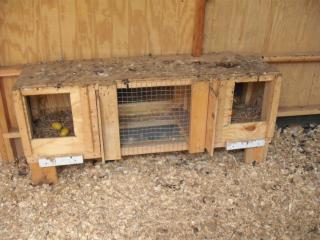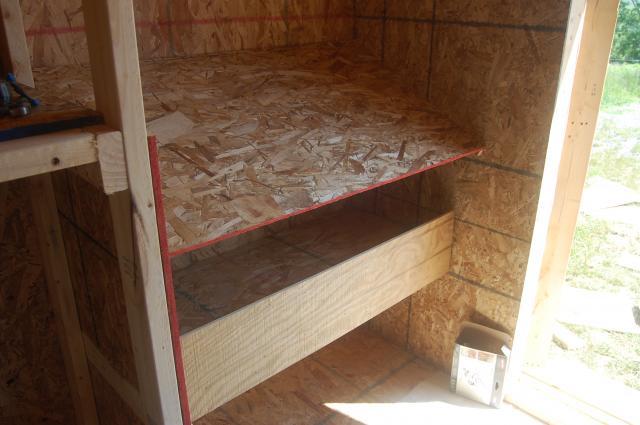Very nice. Basically a 9' x 10' coop with 3' x 10' entry and storage.
I assume you want to brood chicks while you also have adult chickens using the coop. How many adult chickens do you plan to have at any one time along with how many chicks? How old will the chicks be when they leave the brooder? This directly effects how much roost space you need, how many nesting boxes, and the size of the brooder. You can use a community nesting box to accommodate more laying hens in less space. And I assume you want it to be a permanent part of the coop. When not in use as a brooder, it could find other uses, such as to break a broody or keep one that is injured.
For a brooder, you need to provide sufficient space for them to grow, plenty of ventilation, make it draft free, room to feed and water, and a means to adjust the heat, which you can do by either changing the wattage or, better yet, raising and lowering the heat lamp. In the coop you don't want the adults to perch on top and poop on the chicks. They will get up there so you need to have a solid cover on it with an overhang. I'd build it extra big too as they really do grow, especially if you don't have a separate grow-out pen.
I see two options. You can put it in the same corner as the nest boxes but on the other wall. The other option is to put it on the wall that partitions off the storage area. Both have advantages and some disadvantages. You can rearrange the feeders and the waterer to accommodate either. The primary disadvantage I see in the nesting box corner is that I would want as long a runway as possible for the chickens to land, coming off the roosts so they don't bang into anything. The advantage is that I think you have more room to make it bigger. The disadvantage to the storage room wall location is that you might limit your door swing and you are limited in how long you can make it.
In either case, I'd build it high enough so it is easy to clean out and work with the chicks. I'd also make sure the adult chickens could get under it so you do not take up their effective coop space. Chickens are basically ground dwelling birds. Ground area is the only space that really counts as far as how many you can put in a coop. The top does need to be lower than the roosts.
I'll enclose a photo of my nesting boxes to show a feature you might want to consider in the brooder. I put those slots in so I can make a larger area to isolate a broody without moving her. The center section is for feed, water and a poop area. I can access it from the back. I'd suggest you build a fairly long brooder and partition it off something like this so you can isolate sections. It will give you a lot more flexibility in managing your chickens in a predator proof area. I use this to isolate a broody while she is hatching, break a broody, keep injured chickens, or keep a chicken on a water only diet the day before I butcher it to clean out its digestive track. You may fine other uses foar an area like this.
Hope this helps.
 .
.



